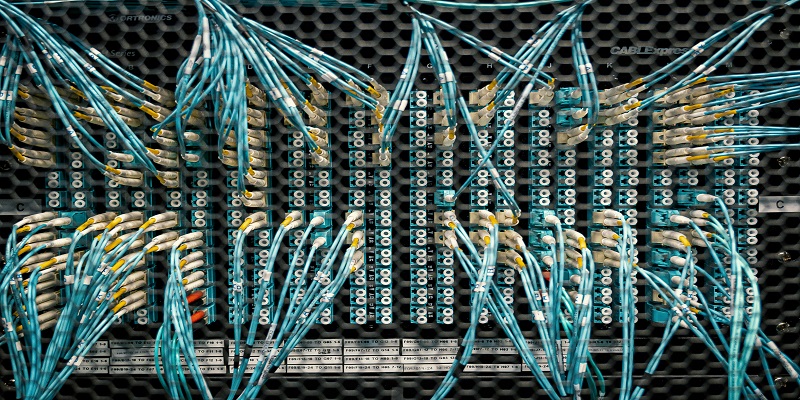The demand for faster and more reliable internet continues to rise, driven by streaming, gaming, video conferencing, and the growth of smart cities. High-speed data transmission has become essential, pushing the development of advanced technologies. Fiber optics engineering plays a crucial role in this innovation. It drives the design and construction of high-speed fiber optic networks, delivering fast, reliable, and scalable internet access.
Fiber optic networks transmit data through light signals using thin strands of glass or plastic. These networks have transformed long-distance data transmission.
The Role of Fiber Optics Engineers
Fiber optics engineers handle the design and construction of infrastructure necessary for fiber optic communication systems. They take on responsibilities like planning, installing, testing, and maintaining fiber optic cables and related equipment. These professionals work on projects ranging from laying underground cables to developing advanced networking solutions that support high-speed internet access.
Engineers in this field need to master how light travels through fiber optic cables. They must also stay updated with the latest technologies, equipment, and materials used in building efficient networks. Additionally, fiber optics engineers troubleshoot and optimize networks, ensuring that they provide high performance.
Responsibilities of Fiber Optics Engineers
Designing Fiber Optic Networks:
Engineers plan the layout of fiber optic networks, deciding where to install and connect cables. This stage requires careful planning to ensure that the network can handle high data volumes and deliver fast, reliable service.
Installing Fiber Optic Cables:
Fiber optics engineers oversee the cable installation process, which may involve digging trenches to lay cables underground or stringing them along utility poles. They make sure that the cables stay protected from environmental factors like moisture and temperature changes.
Testing and Troubleshooting:
After installation, engineers run tests to verify the network’s performance. They measure signal strength, assess data transmission speeds, and pinpoint any areas where the network may be underperforming. If issues arise, engineers troubleshoot and resolve them to keep the network running efficiently.
Maintaining Fiber Optic Networks:
Engineers also perform regular maintenance on fiber optic networks to maintain their performance. This includes routine inspections, replacing worn-out components, and optimizing the system to handle increased data traffic.
Building High-Speed Fiber Optic Networks
The process of building fiber optic networks involves several critical steps. Engineers combine technical expertise with project management skills and consider the physical environment for the network installation. Below is an overview of the steps involved in constructing high-speed fiber optic networks.
Planning and Design
Planning forms the foundation of building a fiber optic network. Engineers collaborate with stakeholders to define the project’s scope and address end-user needs. They map out the physical area for network deployment and select the ideal locations for laying cables.
During the design phase, engineers consider factors like distance, terrain, and potential signal loss. Fiber optic cables transmit data over long distances, but to avoid signal degradation, engineers must position the cables strategically and minimize physical obstructions. Proper planning ensures that data is transmitted quickly and reliably over large areas.
Choosing the Right Materials
Building a high-speed fiber optic network requires engineers to choose the right materials. Fiber optic cables can be made from either glass or plastic, each with distinct advantages. Glass fibers are ideal for long-distance transmission because they offer lower signal loss and faster data speeds. Plastic fibers are more flexible and cost-effective but usually serve shorter distances.
Engineers also select protective coatings and sheaths to shield the cables from environmental damage. These protective materials guard against moisture, temperature changes, and physical stress, keeping the fiber optic system intact over time.
Laying the Cables
Once the design is finalized, engineers move on to laying the fiber optic cables. This step may involve burying cables underground or stringing them along utility poles. In underground installations, engineers dig trenches, lay the cables in protective conduits, and ensure they remain secure from physical damage.
For aerial installations, they use specialized equipment to string cables along poles. While quicker and cheaper than underground installations, this method exposes the cables to environmental factors like wind, rain, and ice, requiring extra protection.
Splicing and Connecting
After installing the cables, engineers splice and connect them to create a continuous network. Splicing involves carefully aligning and fusing two fiber optic cables, allowing light signals to pass without interruption.
This delicate process requires precision because any misalignment could lead to signal loss or network degradation. Engineers ensure that each connection is secure and free from weak points to maintain network integrity.
Testing the Network
Once the installation is complete, engineers test the network to verify that it functions as expected. They check signal strength, measure data transmission speeds, and identify potential signal degradation. This testing phase is crucial for identifying issues and ensuring the network performs at its peak.
Optimizing and Maintaining the Network
Fiber optic networks require ongoing optimization after installation. Engineers monitor performance, adjust settings to accommodate increasing data traffic, and replace worn-out components as necessary. Regular maintenance tasks include inspecting cables for damage and upgrading equipment to enhance performance.
Challenges in Fiber Optics Engineering
Fiber optics engineering presents its own set of challenges. While fiber optic networks provide numerous advantages, building and maintaining them can be complex and costly. Below are some key challenges engineers face:
High Installation Costs
Building a fiber optic network requires a substantial upfront investment. Engineers must allocate resources for laying cables, installing equipment, and conducting thorough tests. This can be especially challenging in rural or remote areas, but the long-term benefits of faster speeds and reduced maintenance costs often justify the initial expenses.
Signal Loss and Degradation
Even though fiber optic cables transmit data over long distances, engineers must account for signal loss due to physical factors like cable bends or obstructions. Engineers carefully design and plan the network to minimize signal loss, ensuring efficient data transmission.
Environmental Factors
Fiber optic cables are vulnerable to environmental factors such as temperature fluctuations, moisture, and physical damage. To counter these risks, engineers choose appropriate protective materials and install cables in durable conduits to safeguard the network.
Integrating with Existing Infrastructure
Integrating fiber optic networks with existing copper or wireless systems presents a significant challenge. Engineers must ensure compatibility and seamless data flow between different systems, often requiring extensive planning and coordination.
Future Trends in Fiber Optics Engineering
As high-speed internet demand continues to grow, fiber optics engineering will shape the future of communication technologies. Here are some trends likely to influence the field:
5G and Fiber Optic Networks
The deployment of 5G networks will drive substantial growth in fiber optic installations. 5G technology requires a dense network of small cell sites connected by fiber optic cables, enabling high-speed, low-latency connections. Additionally, Engineers will play a crucial role in building the infrastructure needed to support the widespread adoption of 5G.
Fiber to the Home (FTTH) Expansion
Fiber to the Home (FTTH) technology, which delivers fiber optic connections directly to individual homes, is on the rise. FTTH offers faster internet speeds and more reliable connections than traditional copper-based systems. As more consumers demand high-speed internet, FTTH will continue to expand, creating new opportunities for fiber optics engineers.
Advancements in Materials and Technologies
New advancements in fiber optic materials and technologies will enhance network performance. Furthermore, Engineers will use new fiber types, coatings, and connectors to reduce signal loss, increase data transmission speeds, and boost durability, making fiber optic networks more efficient and cost-effective.
Conclusion
Fiber optics engineering is central to modern communication technology. Engineers in this field design and build high-speed fiber optic networks that power our digital world. By understanding the challenges, staying up to date with new technologies, and continuously optimizing networks, fiber optics engineers ensure fast and reliable data transmission over long distances. Thus, With the rise of 5G and FTTH, the demand for skilled engineers in fiber optics will continue to grow, shaping the future of global communication.





























